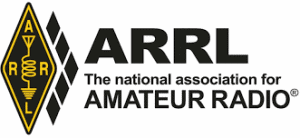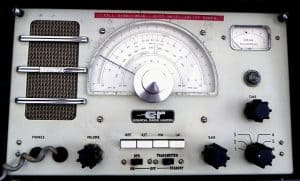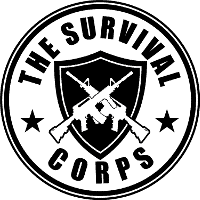Are you an amateur radio hobbyist (ham) wondering how to get a Ham Radio License? I bet you are. Gone are the days when you needed to learn the Morse Code to be a licensed operator of the ham radio. However, you still need to pass a particular exam to get the license. In this helpful resource, you will learn of the most important steps to get the license regardless of your status.
What is a Ham Radio?
It may be a good idea to define what a ham radio is for those who are new to this wonderful hobby. Also known as Amateur Radio, the National Association for Amateur Radio defines it as a hobby and a service designed to bring people, communications and electronics together.
Hams can use the radio to talk around the world, across town and even into space. Even more interesting is the fact that all these happen without the cell phones or internet. You can communicate for many reasons: fun, education, social and even in emergency situations. A ham radio is actually a lifeline for preppers.
Who Uses The Ham Radio?
Put in another way: who is the typical ham? The simple answer to this question is everyone. Uses of the Amateur Radio users come from typical all aspects of life. Students, medical practitioners, school going kids, truck drivers, politicians, missionaries, movie stars and most importantly preppers all use amateur radios. It means the users come from all genders, careers, ages, nationalities and socioeconomic levels.
It works much like CB (citizen band) radios. However, it is extremely flexible and versatile. You can communicate through a Morse code on a relic brass telegraph key, computerized messages transmitted through satellite or even voice communication via a hand-held radio. This radio helps hams to reach out to the world amidst the silence.
Why Do You Need A Ham Radio License?
Some people argue against the need for a license to operate a ham radio. It is easy to support such an assertion. However, it is also important to remember that the airwaves used by such radios are broken up in terms of frequency and allocated for different purposes. Without a license, the airwaves would be misused. The consequences would be tragic ranging from police missed calls to fatal plane crashes.
The licensing body is the FCC (Federal Communications Commission). The aim of FCC was to fill the dire need for a new pool of experts capable of providing backup during emergency situations. The commission also conceptualized the possibility of the hobby to advance the technical skills and communications of radio to improve international good.
Steps to Getting a Ham Radio License
So, how do you go about getting this license in the easiest and the fastest way possible? Since the drop of the Morse Code requirement, getting the license is nowadays no-brainer. All you need to do is be serious about what you want and work toward it. Here are a few easy steps to follow:
Step 1: Determine the Type of License You Need
As you previously learned, the regulator of Amateur Radio network is the FCC. The same commission that has created the operator test. You have three types of licenses to choose from – the general, technician or extra. However, FCC regulations demand that you get the technician license before you get the other two. Here is a brief description of each of these licenses.
- Technician License: This is the entry or primary level license. To get the license, you are required to complete a 35-question exam of the multiple choices type. The questions are rather simple and straight forward. Each of the 35 questions comes from a pool consisting of over 400 questions. The technical license is essential if your intention is to talk within your city, community or town. In other words, a technical license is all you will need if you want to talk locally.
- The General License: This is the secondary level ham radio license. Here, you will be required to answer correctly 35 multiple choice questions with each question coming from a pool of 500 questions. The general license allows you to communicate during emergency situations. Having this license means you can communicate between you and emergency crews during emergencies. It allows you to use ham frequencies whenever your local lines are down.
- The Extra License: This is the tertiary level amateur radio license. It is also the most advanced and the most difficult license to get. The test for this license consists of 50 multiple choice questions. Each of the questions is derived from a pool of 500 questions. This license allows you to enjoy all the privileges that come with the amateur radio network. It means you can communicate locally, nationally and even internationally.
Step 2: Find a Test in Your Area

Volunteer Examiners from ARRL or the American Radio and Relay League administer the licensing exams. The tests are administered across the US. Chances are that you will find one near your locality every month. Passing the test for the primary license requires that you get at least 26 questions correctly.
You will spend nothing for the license. However, ARRL will charge you $15 for the preparation and administering of the exams.
So, how do you find a test in your area? The process is quite simple. Just go over to a particular link at the ARRL. You will be required to enter your zip code and pick the time and location convenient to you. Particular tests have different requirements. Some tests may require prior registration while others do not.
A good trick is to pick test that is more than a week out and then commit to it. This will give you enough time to study for the test.
Step 3: Read Well for the Test
Any test requires good level of preparation. You do this by reading the relevant materials containing information on the test topics. Multiple choice questions are often simple but they test your level of understanding. The same applies for the ham radio license tests.
Here, we will focus on the readiness for the technical license test since it is the entry level. Besides, you need to pass this test first before you can take the other two. The test requires that you understand some frequencies, rules of operation, electronic and electoral principles, basic safety as well as basic arithmetic.
There are several online materials to help you with the study for the test. It is impossible to list all of the websites and resources containing reliable information to help you pass the test. By far, the best and most reliable is the American Radio Relay League (ARRL). Here, you can find relevant books to buy and study for the test.
Another great website is the HamStudy.org. This website keeps track of your learning process. It also gives you access to pool of 500 questions from which the 35 multiple choice questions may come on the exam day.
A very good advice would be to get involved with a ham club in your locality. Such clubs offer classes designed to help you study for the test. Joining the club or even talking to an active club member can help you get study resources and gain better understanding of radio equipment and lingo. You can easily find your local ham club via ARRL.
You need to be careful if you intend on studying online resources. This is because the FCC changes the pool of questions every two years. Certain websites may not be up to date.Therefore, they may have outdated pool of questions that may not be helpful to you.
Step 4: Take Your Test
Once you are convinced you have studied well, ready your mind for the exam. Keep in mind that you will have to pass at least 26 out of 35 questions to get licensed. In case you are not successful, you can simple reorganize yourself and take the test later if not immediately.
If you manage to get 80 percent of the 35 multiple choice questions right, the FCC will provide you with a ‘Call Sign’. The sign is unique to every ham out there. It is essentially an identifying marker or code name that you will use over the ham radio waves. Thus your friends will always know you through your call sign. The license is valid for 10 years after which you will be expected to review it to continue using the service.
Step 5: Buy a Suitable Radio

Passing the test is vital for the license but things do not stop there. You need a suitable radio to enable you communicate with your friends, colleagues, family, acquaintances and even emergency personnel. Although you might not need a lot of money to take the test, getting a radio is another matter.
Depending on the quality of the radio, it can cost you from just below $100 to over a thousand dollars. Besides the radio itself, you might have to buy certain accessories such as car antennae. The total cost could run into hundreds of dollars even if the cost of the radio is manageable.
Buying a radio is therefore a major investment that you must plan for. The market has many different brands and models of ham radios. You may have to carry out some research to compare the features and specifications of that best suit your needs and budget. The best brands include Yaesu, BaoFeng, Amcrest, Hesenate and Btech. There are different versions of each brand mentioned. You can check them out.
In case you are ready to buy your first radio but you do not know where to start, try consulting club members near you. They have enough experience to advice you on the type of radio to buy. Club members may also show you where to buy one at good price.
Step 6: Familiarize Yourself with the Rules of the Radio Waves
Getting the license and the radio is just part of the game. Getting hold of other hams and enjoying time of conversation means you must play by the rules of the waves. First, you must familiarize yourself with those rules. Radio wave rules are just behavioral expectations and established procedures for using radio.
Only by learning the rules will you be able to fit in the amateur radio fraternity and know what other hams expect of you on the airwaves. The best way to gain this knowledge is to talk with other hams through your radio. Learn the FCC rules governing the operation of ham radio so that you do not run into problems.
For instance, the FCC does not tolerate lingo and swearing used on CB radios. The commission also requires that all communications must be open and hiding meanings is violation of the FCC rules. Visit the FCC website and read the rules. In case you do not understand anything, just ask others in the ham club to clarify.
Step 7: Practice to Be Perfect
Perfection comes through practice. In case you got the ham radio license to help you with an emergency, then you must be perfect in operating. Imagine what could happen if you cannot communicate in a SHTF. Operating a ham radio once will not give you the experience you need to be an excellent operator.
Ham radios are not that simple to use. First, you must learn the various frequencies and the best way to connect with others. This is why you need to practice over and over to achieve perfection. Such knowledge will make it easy for you to communicate when it matters most.
Conclusion
You can see from the discussion that is not hard to get an amateur radio license. Through these 7 easy steps on how to get a ham radio license, you can be confidence to get the license in just a week. Conduct research on the exams and study to achieve the passing score. There are resources online to help you obtain everything you need for a successful test. Congratulations, you are on the right path to calling yourself a HAM.
[kkstarratings]
